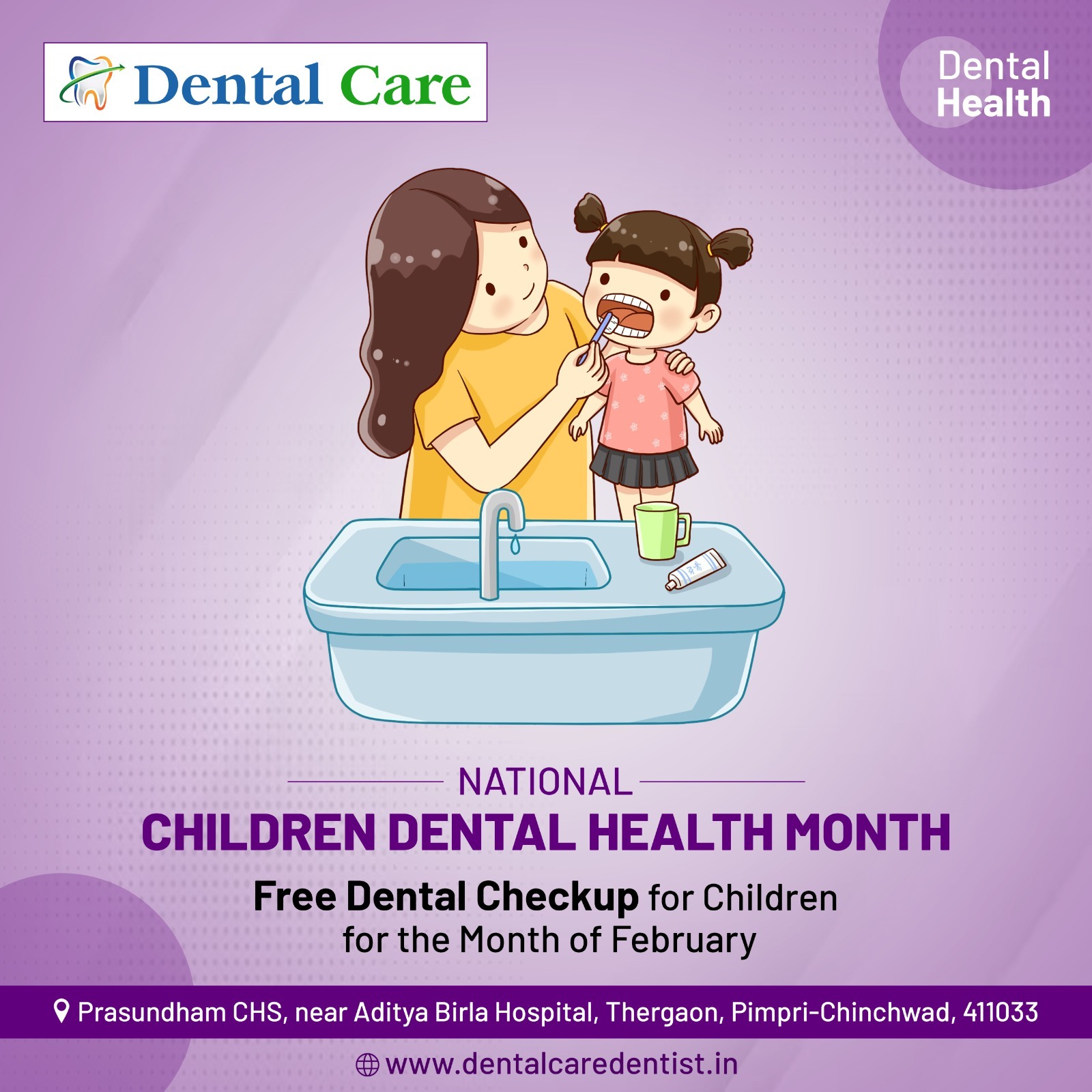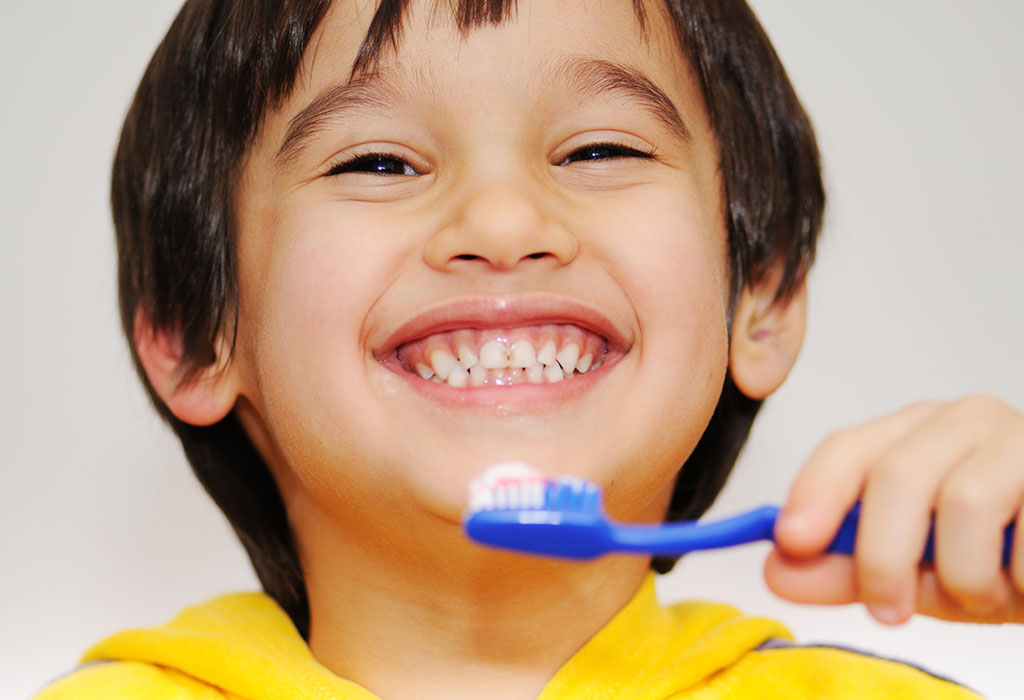National Children’s Dental Health Month increases awareness of the need of developing excellent dental habits in children at a young age to ensure a lifetime of healthy smiles. Parents and caregivers play an important role in promoting children’s dental health this month and throughout the year. At Dental Care, we understand that good habits are developed at a young age. Developing healthy habits in children at a young age helps them get a head start on a lifetime of healthy teeth and gums. Our dentists work with children and their parents to help them develop healthy habits. Your Dental Care dentist will also advise your child on appropriate eating habits, and sealants as your children grow.
Why you should visit the Dentist regularly
Having to visit the dentist every six months may not be the appointment that everyone looks forward to, but it is one of the most important ones to keep. If you have found yourself wondering what the point of having regular dental checkups and cleanings really is, we’ve got something for you to think about.
If you are considering skipping a dental checkup because of cost or another factor like time or dental anxiety, make sure to consider all the risks. What you might end up paying in the long run for not visiting your dentist will likely be much higher, both for your wallet and your peace of mind. Here are some of the most important reasons why you should see your dentist regularly:
1. Oral Cancer Detection
Oral cancer is an extremely serious disease that manifests itself in various ways. Without knowing the signs of its early onset, oral cancer is often not diagnosed and can quickly progress and become life threatening. But thankfully, an early stage oral cancer diagnosis is often easily treatable.
Your dentist is highly trained to recognize these signs and symptoms, and with regular dental checkups every six months the likelihood of catching oral cancer in time is dramatically higher. Recognizing oral cancer in its early stages is key in treating it successfully, and while you may not notice oral abnormalities, your dentist will.
A VELscope Cancer exam is non-invasive, entirely pain-free, is covered by MSP in some cases, and lasts only a minute or two at most. The exam catches invisible signs of dead tissue caused by tumors forming by shining a special light inside the mouth. Takes very little time, totally painless, and could save your life? It’s a no-brainer!
2. Plaque, Tartar, and Cavities
Even with the most diligent daily brushers and flossers, there are still small areas in the mouth that are missed by a regular brushing and flossing. When plaque builds up it becomes more difficult to remove, solidifying and turning into tartar, which is extremely difficult to get rid of without professional help.
Regular dental cleanings prevent tartar from eroding teeth or creating holes in them, which is how cavities are created. Cavities rarely give any warning signs as they form, only resulting in a small ache once the tooth is already decayed. Once the damage has been done, you will have to go back to the dentist to have cavities and other tooth problems filled and fixed. This can all be avoided with regular cleanings that take care of plaque and tartar before it becomes destructive.
A cleaning appointment is also more affordable than getting a filling, so if money’s tight you should make sure not to miss the cleanings!
3. Gum Disease
Plaque and tartar buildup not only cause tooth decay but can also erode the mouth’s gum tissues. This happens when tartar buildup causes an infection where the gum is connected to the tooth, making the gum pull away from the tooth. This infection is known as gingivitis and as it progresses the tissue that attaches gums to the teeth breaks down.
Once it reaches this point it is officially gum disease, and only at this point will there likely be any swelling, bleeding, or soreness in the mouth. Along with the breakdown of gum tissue, gum disease also causes a breakdown of the bone that holds teeth in place. At this point it is common to see teeth loosening or falling out altogether and drastic treatment methods will have to be taken by a dental specialist.
Not only do specialists require more appointments and likely a blow to your wallet, but treatment of gum disease, depending on the severity, can include surgery, extremely deep cleaning, and medication. To avoid all of this, regular dental cleanings are essential in catching and addressing gingivitis before it gets out of hand.
4. Keeping Bad Habits in Check
There are many bad habits that can have a negative impact on your oral health, some of which you may not even realize are causing issues. Some of these habits include chewing ice, biting your nails, clenching your jaw, grinding your teeth, eating particularly sticky or hard sweets, brushing your teeth too hard, drinking coffee and red wine, and of course smoking.
When you go for regular dental checkups, your dentist can check for any oral damage caused by these or other habits which you may otherwise not have noticed. Being informed about specific destructive habits allows you to change or alter your lifestyle choice to prevent further damage. Visiting the dentist allows you to fix the damage that has already been done, and help your oral health be the best it can be.
5. Find Problems Under the Surface With X-Rays
A crucial part of visiting your dentist every six months is getting your teeth and jaw bone x-rayed. X-ray images allow dental professionals to see what is happening beneath the surfaces of your mouth, and can find and diagnose issues that may be invisible to the naked eye. Problems like this can include impacted teeth, which are growing teeth that are blocked from pushing through the gum line, as often seen in wisdom teeth.
Damage to the jawbone can also be pinpointed as well as any bone decay, swelling, cysts, or tumours, all of which are impossible to actually see without x-ray imaging. Finding these or any other major oral issues as soon as possible is critical in order to properly treat them.
Especially with destructive diseases that show little to no symptoms but progress quickly, up-to-date x-rays and bi-annual checkups are the best way to keep on top of your health.
6. Head, Neck, and Lymph Node Checks
In addition to checking your mouth, gums, and tongue for signs or oral cancer, your dentist will also check your neck, jaw, and lymph nodes, located just below your jawline, for any swelling, lumps, or other abnormalities. If an abnormality is found it could be a sign of a major health issue, and your dentist will alert you to it and refer you the appropriate medical professional.
Swollen lymph nodes are a particular area that do not necessarily hurt or seem out of the ordinary but when identified properly by a professional could be a sign of certain kinds of cancer or other diseases that require immediate attention. Not having regular dental checkups drastically cuts down how often your neck and thyroid glands are checked. So while looking for abnormalities only takes your dentist a minute, it could mean an extremely serious disease is identified early enough to make a huge difference.
So, Are Dental Checkups Worth the Effort?
Dentists and dental professionals are not only concerned with fixing teeth. They professionally clean your teeth, aim to ensure your teeth and gums are healthy, and check for abnormalities that may otherwise go unnoticed and could be a sign of larger health issues. Dental professionals make sure that your bones are strong, and will help you correct any habits that may be sabotaging your oral health, among other things.
Skipping dental appointments may not seem like a big deal, but oral issues can develop and progress extremely quickly whether or not you notice it. By keeping on top of your dental cleanings and checkups you’re doing yourself a big favour in the long run.
Here’s wishing you a great year of oral health!
Is Teeth Whitening for me?
Many teeth whitening systems and products are available, including whitening toothpastes, over-the-counter gels, rinses, strips, trays, and whitening products obtained from a dentist.
Teeth whitening is ideal for people who have healthy, unrestored teeth (no fillings) and gums. Individuals with yellow tones to their teeth respond best. But this cosmetic procedure is not recommended for everyone.




